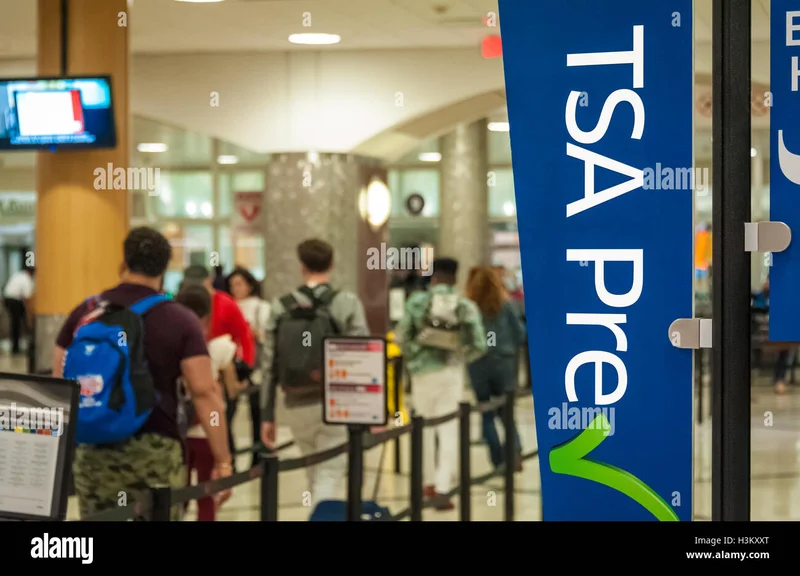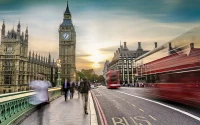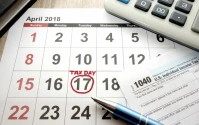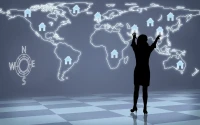So, you’re standing in that soul-crushing airport security line, the one that snakes past the Cinnabon and almost touches the baggage claim carousel. You’re juggling a laptop, a half-empty water bottle you forgot to chug, and your own dwindling will to live. Then you see them. The Chosen Ones. Gliding through the TSA PreCheck lane, belts on, shoes laced, smug smiles plastered on their faces.
For years, that’s been the deal. Pay the government a fee—or, more likely, let your fancy credit card pay it for you—and you get to buy back a sliver of your dignity. You get to keep your shoes on. It’s a protection racket, plain and simple. You pay up to avoid the hassle they created in the first place.
But that was just the appetizer. Now, the TSA is rolling out the main course: Touchless ID. They want to scan your face.
They sell it, offcourse, as the next leap in convenience. "No fumbling with physical documents!" they chirp. Just stare into the little camera, let the algorithm do its thing, and presto—you’re one step closer to your overpriced airport beer. It’s all so seamless, so efficient, so…inevitable. And that’s the part that should be making the hairs on your neck stand up.
The Velvet Rope Economy of Air Travel
Let's be real about what TSA PreCheck has always been. It’s a class system for the security line. For about $80 every five years, you become a "Known Traveler." A trusted subject. The government runs a background check, takes your fingerprints, and in exchange, you get to act like it’s 1999 again and not partially disrobe in front of a thousand strangers.
In April 2024, the TSA proudly announced that 99% of these PreCheck passengers waited less than 10 minutes. Great. Fantastic. But what does that say about the other line? The one for the plebs? It’s an implicit admission that the baseline experience is designed to be miserable. The misery is the product; PreCheck is the upgrade you pay for to escape it.
It’s a bad system. No, ‘bad’ doesn’t cover it—this is a masterclass in behavioral engineering. They create a problem so frustrating, so universally despised, that we’re grateful to pay for the solution. It’s like a kidnapper charging you for better-tasting water. And we line up for it, flashing our premium credit cards that offer the fee reimbursement as a "perk," tying us ever deeper into the web of consumer debt and loyalty points.
But at least with the old PreCheck, the transaction was somewhat clear. Money and fingerprints for a faster line. Now, they’re upping the ante. The price of admission to the super-duper-express lane isn't just your cash or your credit card's annual fee. It’s your face.
Smile for the Database, Traveler
This new TSA PreCheck® Touchless ID program is being sold with the same slick, corporate-tested language as every other privacy-eroding technology we’ve been fed for the last two decades. It's "more convenient," "more efficient," and "more secure."

Let me translate that for you.
"More convenient" means less friction for them to gather your data.
"More efficient" means they can process more humans per hour through the security checkpoint, which is great for airport metrics but does nothing for your actual freedom.
"More secure" is the biggest lie of them all. Secure for whom? It creates a massive, centralized database of our biometric information, a honeypot so tempting that every hacker from here to Moscow is probably drooling over it.
They promise the data is deleted within 24 hours of your flight. Do you believe that? I mean, really? In a world where every click, every search, every "like" is stored indefinitely on some server in a Virginia data farm, we’re supposed to trust that the Department of Homeland Security is diligently hitting "delete" on our facial scans? Give me a break. This ain't my first rodeo.
The process is insidious. You opt-in through your airline profile. You add your passport number. You give consent. Then you show up at the airport and stand in front of a camera, the little green light blinks, and a gate opens. It feels like magic. It feels like the future. But what you’re really doing is training yourself, and everyone around you, to accept casual, constant biometric surveillance as normal. It’s the slow boiling of the frog, and the water is getting dangerously warm. First, it was taking off our shoes. Then it was the 3-1-1 liquids rule. Now, it's our faces...
What happens when this tech moves beyond the airport? When you need to scan your face to enter a stadium, a subway station, or a grocery store? What happens when a system glitch says your face doesn't match and you’re suddenly a non-person, unable to get where you need to go? We have no idea, because we’re too busy being thankful that we saved five minutes in a security line.
I don’t know. Maybe I’m the crazy one. I see the regular security line, the one with screaming kids and stressed-out parents, and the temptation is real. The desire to just give in, to upload my face, to do whatever it takes to make the pain stop for a little while is overwhelming. Maybe that’s the whole point of the system. To wear you down until you’ll trade anything for a little convenience.
So We're Paying to Be Scanned
It all comes down to this: we’re so thoroughly beaten by the security theater that we’ve accepted it as a permanent part of life. Now, we’re not just tolerating it; we’re actively paying for the next-level version of it. We’re buying the premium subscription to our own surveillance. We’re handing over our cash, our fingerprints, and now our faces, all for the privilege of a slightly less degrading experience. That isn’t progress. It’s a quiet, orderly surrender.









